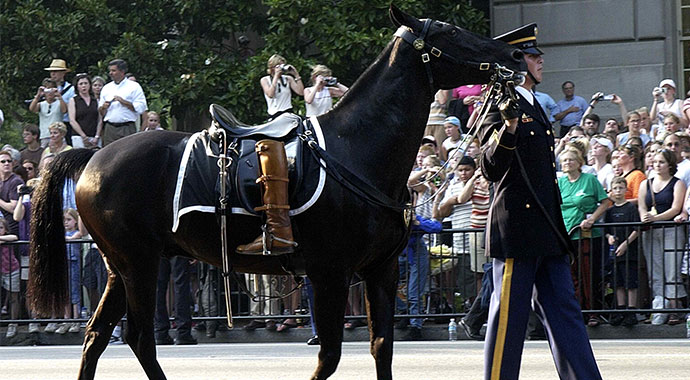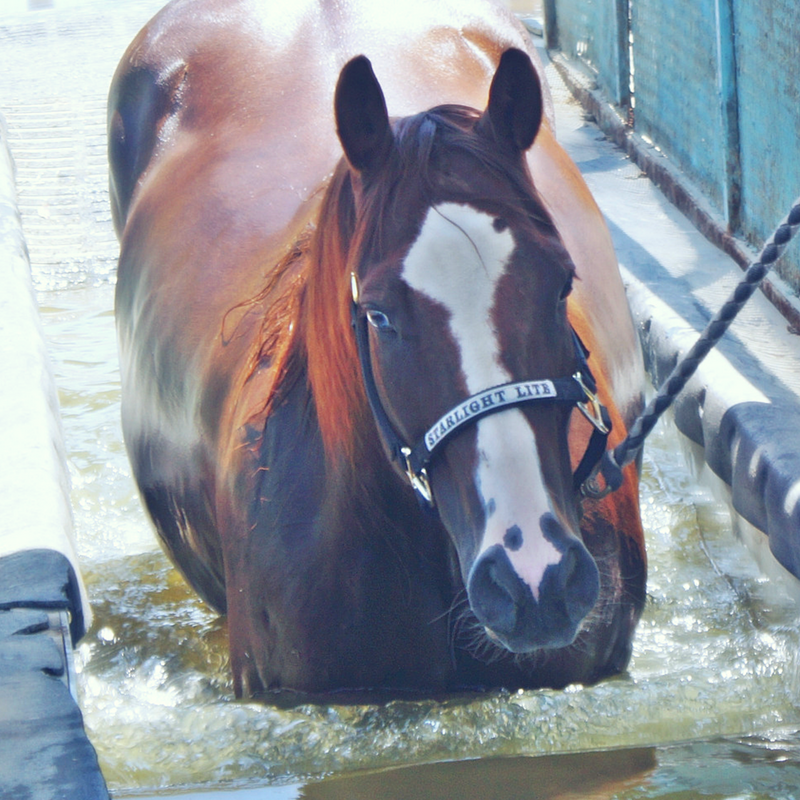Horses have been involved with memorial processions and remembrances for thousands of years. It’s been said that when a soldier of Genghis Khan died in battle, they dressed his horse is full armor, then escorted the fallen to his grave. Once buried, the horses was killed to be able to serve his rider in the next world. Although, our traditions have become more civilized over time, the horse remains a large part of memorializing those lost.
The Riderless Horse
The most iconic of these, is the riderless horse. In America, this honor is given to an Army or Marine Corps officer who was a colonel or above, as well as the President of the United States, and the Secretary of Defense. Traditionally, the horse is fully tacked and rides with soldiers boots backwards in the stirrups, symbolizing the soldier looking back at his troops one last time. It is said that George Washington’s horse was used in his funeral procession carrying his saddle and pistols.
The most notable of these are:
Old Bob, who was used in Abraham Lincoln’s funeral procession.
Seargeant York, a Standardbred gelding, who was used in Ronald Reagan’s funeral procession.

Black Jack, who is probably the most famous, was a half-Morgan named after General Pershing. Black Jack was used in the funerals of Presidents John F. Kennedy (1963), Herbert Hoover (1964), and Lyndon Johnson (1973), as well as General Douglas MacArthus in 1964.
An interesting thing about Black Jack was that he was the last of the Quartermaster-issue horses branded with the Army’s U.S. brand (on the left shoulder) and is one of only two horses ever to be buried with full military honors. (The other horse with the honor was Commanche, one of the few equine survivors of the Battle of Little Bighorn.)
Rider and Horse Statues

Another very well known way that horses are used to help memorialize the fallen are in statues. Growing up in the midwest, you were hard pressed to find any capitol building without at least one statue of a horse and rider. The tradition of horse and rider statues goes back to ancient Greece where a horse and rider statue, known as the ‘Rampin Rider’, can be found on the Athenian acropolis (c. 550 BC). The first known statue in America was of Andrew Jackson (1852) sculpted by Clark Mills.
In statues in America and the United Kingdom, particularly those revolving around the American Civil War and the Battle of Gettysburg, the hoof position of a statue is significant to how the rider died. A rearing horse signifies that the rider died in battle…One front leg up tells that the rider was wounded in battle and died of his wounds after battle, and all four hooves on the ground that the rider died outside of battle.
Even though not used in battle in modern times, the horse will forever be a icon of the military. Loyalty, bravery, courage – All things that the horse effortlessly conveys about the deceased warrior.
How are you remembering the fallen today? Let us know in the comments.




